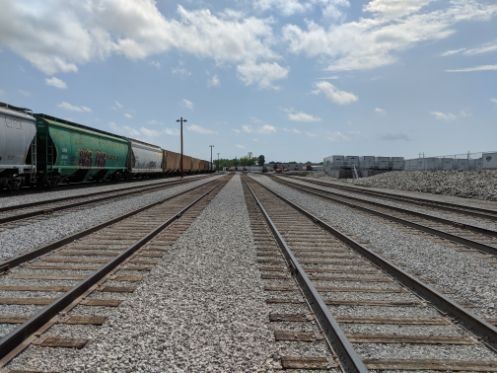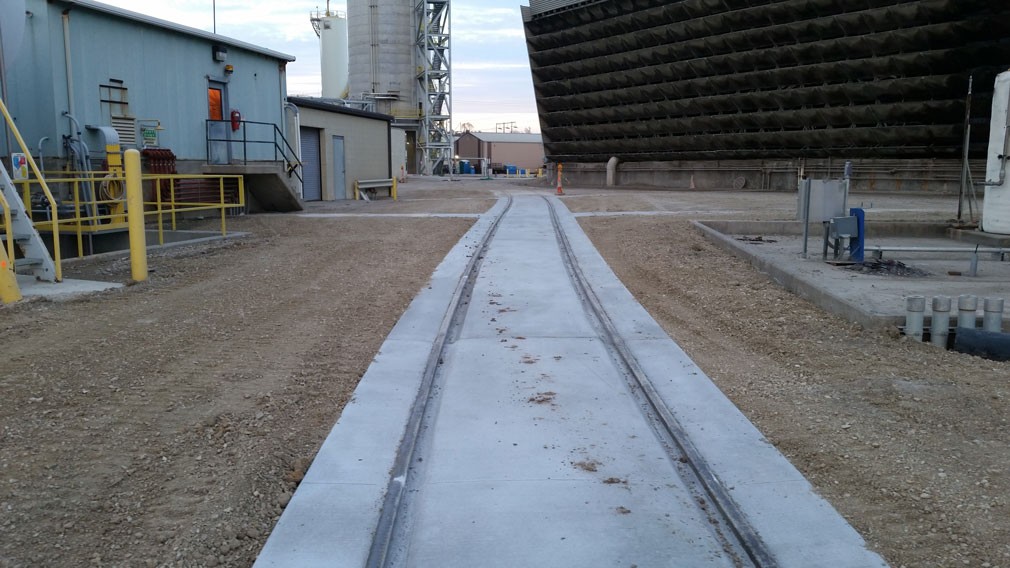Trucks, Trains, and Pet Supplies!
We all know the joy of having a pet. It is great fun to come home at night and have Fido meet you at the door with his tail wagging and jumping up and down because he is so glad to see you. Pet owners spend billions of dollars every year on food, kitty litter, toys and all the things it takes to take care of a beloved pet. It all seems so simple. What is not simple is the effort it takes to get that supply from the factory to the shelf at the store. One of Musselman & Hall’s favorite customers operates a pet supply manufacturing plant in the Kansas City area. The plant operates around the clock and shuts down only every third Sunday for maintenance. The plant ships out more than one hundred semi-trailer loads of their products every day. The raw materials for the goods are shipped in by rail. Until the past year the plant had only five railroad tracks to store the raw materials on. Unfortunately, the five tracks were not enough to store the carloads of ingredients coming in every day. Consequently, the railroad servicing the plant had to store extra cars in their yard and switch them in as needed. Of course, the railroad charged for the storage through demurrage charges for cars that were parked in the various yards too long. Another problem was the railroad company’s necessity to switch into the plant six times a week. This switching not only tied up expensive switch engines and crews, but also shut down the busy mainline causing delays to other rail traffic. More than twenty trains a day come by the plant. The plant owners hired M&H to help solve the problem. In the fall of 2017, M&H moved in to expand the number of tracks from five to ten. Next to the existing tracks was a giant semi-trailer parking lot. That space was needed for the railroad yard. Musselman & Hall moved in first to relocate the trailer lot to the opposite side of the plant. The old trailer lot elevation was twelve feet above the proposed track elevation, so the track installation work included mass excavation of soil and rock, the relocation and installation of a fifty-three inch storm sewer line and the relocation of a city owned sanitary sewer line. M&H, working with their grading contractor, excavated through a fifteen foot thick limestone ledge to cut up to seventeen feet below grade for the new sanitary sewer. The work also included installation of soldier pile and segmental block retaining walls. M&H Concrete Superintendent Wes Skaggs and his crew built the concrete retaining walls. Once the grading and walls were finished, an M&H crew, under the supervision of Asphalt Foreman Dale Hetherington, moved in to install a six inch thick asphalt base between a course of large stone aggregate rock and the sub-ballast to stabilize the grade for the track. Previously, Asphalt General Foreman Matt Eilenstine and his crew applied asphalt pavement to the new trailer lot at the other side of the plant while M&H Concrete General Foreman Bryson Scott and his gang installed concrete dolly pads. Dale Hetherington also repaved a portion of the existing semi-trailer lot where the relocated sanitary sewer was installed. General Foremen Nik Perkins and Michael Thornton supervised the rail work.
According to M&H project manager Chuck Rosemeier, “This was really a fun job for us and a great example of the diversity of our company. Our ability to do most of the work ourselves saved the owner a ton of money and also helped us stay on schedule since we were not having to deal with a bunch of subcontractors. Finally, the discovery of the design error by Nik and Michael was huge. Their brilliance allowed the problem to be resolved before it became a big problem that could have cost millions of dollars. They avoided a real train wreck, if you will pardon the pun.”

